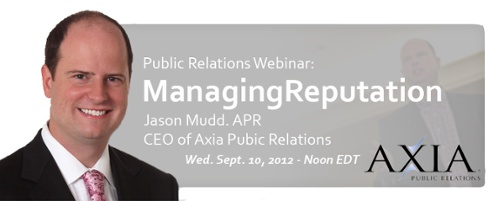
Martin Shkreli, CEO of Turing Pharmaceuticals, has the unique, highly intelligent and egotistical personality type some dub as a “cavalier CEO.”
A public relations professional’s job, like many others, comes with various stressors and road bumps that we must sensitively navigate to benefit the greater good. On the red carpet, few see the sweaty PR pro lugging mountains of company collateral, promotional swag and schedule binders to a trade event. Our jobs aren’t always glamorous and are frequently littered with deadlines, quick-turn requests and, of course, constant rejection from media.
Public relations is an undeniably stressful field. “How bad can it really be?” you may wonder. Quite, it turns out. Why? Two words: Martin Shkreli.
Shkreli, the 32-year-old founder of New York-based Turing Pharmaceuticals, represents a unique personality type that PR people dub the “cavalier CEO.” Often highly intelligent and egotistical, these individuals resist authority and advice like no other. They accept little counsel, smirk as others offer it and can dislodge months or years of public relations efforts with one broadly distributed comment.
Literally overnight, Shkreli decided to up the price of a lifesaving drug, Daraprim (used by AIDS and cancer patients, among others), from $13.50 per pill to a completely outlandish $750 per pill, sparking intense public outrage that even spread as far as Hillary Clinton’s camp.
Following this uproar, Shkreli stood his dubious ground. In a follow-up news interview, he corrected media reports about the price of the pill, informing everyone it had actually been $18 per pill, and, with virtually palpable condescension, suggested that he may reprice the drug again to make it “more affordable.”
He didn’t appear to consider himself in the middle of a communications crisis; he didn’t respond humbly to inquiries about the value of human life. He proclaimed that it was his company to do with what he wanted and that was the end of it. He is the quintessential cavalier CEO.
So what should you do if you find yourself employed as PR counsel by a similar individual? You’ve got two immediate options: cut and run or stick it out using a few words of advice.
1. Take control of all communication. When cavalier CEOs assume communication control, prepare yourself for battle. CEOs don’t see business as business; it’s personal. Most are both financially and emotionally invested, so their perceptions will reflect that. This is a time when communication skills are of critical importance. You must take direct media communication access away from your CEO. He can continue to operate his social media channels, but only after you’ve reviewed the content. You must handle all media interviews, scheduling, etc. Steel yourself because this won’t be an easy battle to wage or win. If you can’t gain control, move on to the next tip.
2. Leverage trusted media relationships. Media respond to cavalier CEOs like trained lapdogs, glued to your doorstep and on the other end of your phone, baiting you for further comment or details. To protect and support your CEO, consider collaboration with high-profile media notables whom you trust to share the story framed with proper context. Journalists and readers alike love a good fight, but your job is to defuse bombs set to explode around your CEO should he continue to expose the business to intense scrutiny. Create a list of your top 10 media contacts and request a private meeting, interview or press conference to alleviate blowback.
3. Get analytics in order – fast. To have a purposeful discussion with your CEO, you will have to prove, factually and statistically, that what many outside of the CEO’s office perceive as a communications gaffe is exactly that. No one enjoys being told he’s done something wrong, least of all an ego-rich CEO. Therefore, you’ll need to let the data do the talking. Show financial statements, stock price reports, media headlines and, if necessary, focus group data. While the media may be having a field day with your brand and CEO (which will indicate an increase in media impressions), the negative nature of those impressions will hold power. Approach your CEO with facts – not emotion – to avert similar situations in the future.
An unfortunate truth about the public relations profession is that its stressors can come in myriad forms – especially challenging CEOs. When a cavalier CEO takes center stage, you are no longer representing a business, brand or product; you are managing the reputation of a person. It’s a game changer for the inexperienced and ill-prepared.
For further tips on how to mitigate such circumstances, watch Axia Public Relations’ webinar on reputation management so that you can be ready if your CEO ever goes rogue.
 Wendy Bulawa Agudelo has more than 15 years of experience in technology, business, consumer and non-profit public relations. In addition to serving on the Massachusetts Down Syndrome Congress PR Task Force, Wendy enjoys cooking and rooting for her favorite New England sports teams.
Wendy Bulawa Agudelo has more than 15 years of experience in technology, business, consumer and non-profit public relations. In addition to serving on the Massachusetts Down Syndrome Congress PR Task Force, Wendy enjoys cooking and rooting for her favorite New England sports teams.
Featured image credit: 123rf.com
Topics: public relations, crisis communications



Comment on This Article